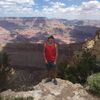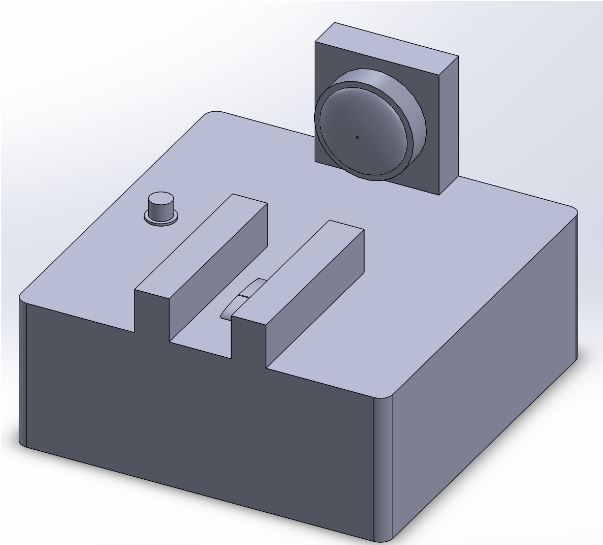BME100 s2017:Group4 W1030AM L6
| Home People Lab Write-Up 1 | Lab Write-Up 2 | Lab Write-Up 3 Lab Write-Up 4 | Lab Write-Up 5 | Lab Write-Up 6 Course Logistics For Instructors Photos Wiki Editing Help | |||||||
Our Company
FlowTex LAB 6 WRITE-UPBayesian StatisticsOverview of the Original Diagnosis System BME100 tested patients for the disease related SNP by dividing the samples of 14 patients among 7 groups. Each group was tasked with 2 patients and performed pcr for both patient samples. In order to minimize statistical error, each patient had 3 replicates and each group also carried out a positive and negative control. Having 3 replicates of each patient's template DNA allowed for a larger pool of data to compare and made it easier to find test results that might have been out-liers due to error. The positive and negative controls gave teams a baseline to gauge whether or not a certain concentration of PCR product was positive or negative. The calibration controls allowed for each team to have their own calibration curves, which was important because the quality and details of the images change with different phones. The results of the ImageJ analysis depended on the picture that was being analyzed. In order to increase reliability of the findings, each drop had three images taken of it and the final results of the ImageJ analysis were reported as an average of the three images' individual image analyses. Overall, the results of the BME100 class was fairly satisfactory. All groups finished their testing and all but 1 patient had a final test conclusion that was either positive or negative.
What Bayes Statistics Imply about This Diagnostic Approach
A possible source of device error is the measurement of the concentration of green in droplet pictures with ImageJ. Every image had two or three extremely bright spots that were simply a result of the limitations of the phone camera, these bright spots greatly increased the measured values of concentration and could have thrown off the calibration curve. Even though the most prominent bright spots could be avoided, there were still some smaller bright spots central to the image which could have contributed to inaccurate measurements of concentration. Another possible source of error lies in completely transferring the contents of each of the tubes onto the slides during the drop fluorimeter process. Although the micropipettes were set to the correct volumes, sometimes an air bubble would occur in the tip and trap a bit of liquid. This would have affected concentration results if not the exact amount of Syber Green or the calibration liquids were put on the slides. A third source of error is possible contamination during the PCR process. A few groups did not have unanimous individual PCR results, instead they were split between testing positive or negative. This led to one group having an inconclusive final result. An inconclusive final result, or final results that were affected by contamination during PCR would give inaccurate statistics for the values used in calculating the Bayes value. The reliability of a test would be diminished if a group that should have gotten a positive final conclusion had an issue with contamination and instead had a final conclusion that was inconclusive. Intro to Computer-Aided Design3D Modeling For the computer aided design portion, Solidworks was used. This was done because we wanted to gain more experience using complex 3D modeling software, and because we already have some prior experience with it. The web based tinker cad is very basic, and difficult to make very exact parts and shapes. Because it runs on a “drag and drop” set up, custom sketches are very difficult to create, as opposed to solidworks, which is a sketch based system. For these reasons, we decided it would most logical to design the prototype in solidworks. Actually creating our design in a more advanced 3D modeling software like SolidWorks did become challenging at certain points, such as making the roller in the center. A bit of trial and error was involved in creating rounded objects such that they would attach to a particular plane. The 3D model is meant to display a sliding apparatus, but when implemented it made the model a bit too messy, so we decided to just implicitly invoke the appearance of a slider by having the camera on the same plane as the glass slide but far away. Our Design
Our design is different from the original drop fluorimeter design in that it adds a camera piece, a USB port, and a mechanized system for adjusting the slide position. The entire goal of this new design is to increase the efficiency of the device by increasing the speed at which users can process samples. The camera replaces external cell phones and the USB removes the hassle of having to share the images via email or wireless storage in order to access them. Instead, it makes transferring photos a quick and simple process that just involves inserting a jump drive from one port to another. This increases the speed at which images can get to processing; the camera is also managed by just a single button that triggers a timer, thereby eliminating the need to have to manually take pictures. The slide position will be adjusted by a roller situated underneath the slide which will move it in accordance with a side knob. It will use the standardized size of the slides to its advantage so that turning the knob will move the slide a set distance each time such that the light will be shining between the middle of the next two slots. Reducing the troublesome manual process of adjusting the slide position to a simple mechanized one increases the rate at which users can process samples.
Feature 1: ConsumablesOur team's improvements to the device are made with the original consumables kit in mind, and are meant to simply make the process of performing tests with the drop fluorimeter more efficient. We considered adding more defined ridges to PCR tubes to make them easier to open, but after considering the high costs of changing standardized PCR tubes in the market, we decided to keep the consumables kit the same. In addition, we wanted to focus on improving the drop fluorimeter because we considered the Open PCR Machine to already be very streamlined and efficient at its job, for its price point. Making custom slides for our drop fluorimeter was a brief consideration, but like the PCR tubes, we decided that it would be too costly to introduce a customized glass slide and that we should instead work around the current consumables kits to keep prices down. Therefore, the PCR consumables kit will still have the key components of:
As for the drop fluorimeter consumable kit, it will consist of:
Feature 2: Hardware - PCR Machine & FluorimeterPCR Machine The PCR machine is not the one that our team chose to redesign. We chose not to redesign the Open PCR machine because it already efficiently performs its function for its cost. Although its parts are very simple, for the purposes of the BME100 labs there is no need to add another function to the Open PCR machine's main duty of acting as a thermocycler. Although a PCR machine that could track the replication in real-time like a Real-Time PCR machine would add more analyzable data, the high cost would not be justifiable for the level of analysis performed in BME100.
The drop fluorimeter is the device that our team redesigned. There are three new additions being added. The first two are the adjustable camera piece via a sliding mechanism and a USB port and the last one is the addition of a roller that automatically moves the glass slide up. The purpose of the adjustable camera piece is to eliminate the need for the user to manually take photos with a cellular device. The new drop fluorimeter's camera will be triggered when a button is pressed, which will then set off a timer for the camera. By making the camera an intrinsic part of the device, we eliminate the human error involved in setting the phone camera up while also standardizing the image quality. Standardized image quality will improve the consistency of qualitative data analysis software, such as ImageJ. The USB port serves a means for which the user can retrieve the stored data. The purpose of the last addition, the mechanization of moving the glass slide is to increase efficiency of the drop fluorimeter. When our own team was testing drops on the drop fluorimeter, we found that a portion of time was always spent re-adjusting the glass slide to the perfectly correct position. Instead of manually adjusting it, our new design proposes using a roller with a high coefficient of friction located under the glass slide and operated via a side knob. Since the glass slides are standardized, the knob will be made such that each twist of the knob engages a gear that moves the slider the correct distance to the center of the next two open holes on the glass slide. Furthermore, since the camera is adjustable, users can maintain a certain distance from the slide as it comes forward or back.
| |||||||






